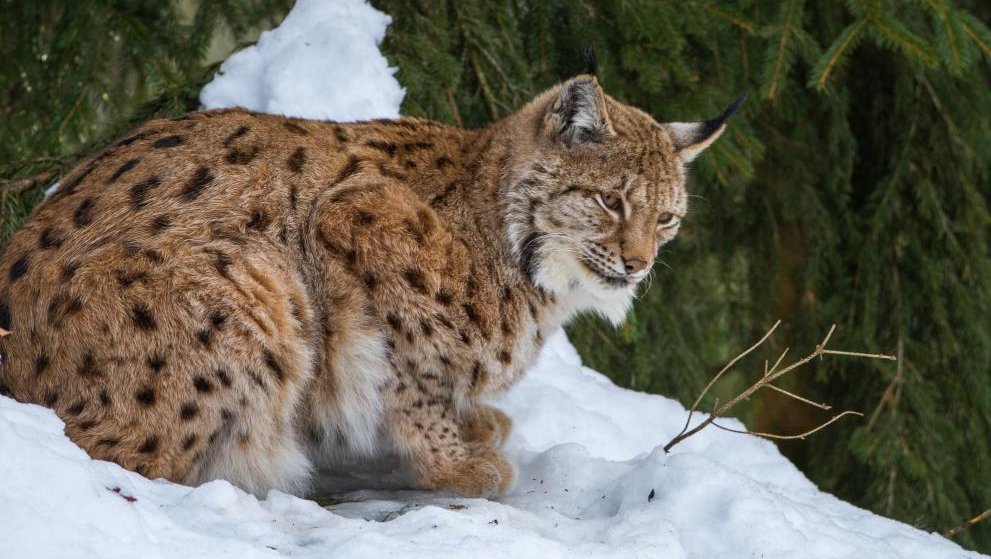

Implementation: May 2013 - February 2015
Member states : Slovakia, Switzerland
Contact organisation: Slovak Wildlife Society (SWS) with partners KORA and Bojnice Zoo.
Contact Person: Robin Rigg info@slovakwildlife.org
More information: Final report (2015)
Target species: Lynx
Problem:
This project established a collaboration on monitoring between Slovakia and Switzerland with the final aim of improving the status of both populations.
Lynx were reintroduced into central Europe largely from the Carpathian population. Live-capture of lynx for reintroduction programmes took place in Slovakia in the 1970s. However, monitoring methods applied in Switzerland by the organisation KORA show that some of these reintroduced populations are suffering from genetic problems as a result of inbreeding. The project “Living with Carpathian Spirits” aimed at increasing genetic diversity of the Swiss population by introducing further lynx from Slovakia.
The first step necessary for this process was acquiring a solid knowledge of the current population in Slovakia through monitoring efforts. The project set up a pilot study to adapt systematic monitoring from Switzerland to conditions in the Slovak Carpathians, in two reference areas. The project was implemented by the Slovak Wildlife Society (SWS) with the partners KORA and Bojnice Zoo.
Actions:
- Deterministic camera trapping sessions of 60 days in each of two reference areas: estimation of lynx abundance and density (using capture-recapture statistics) and performance assessment of the estimation. Fieldwork also included snow tracking and DNA sampling to allow assessment of genetic diversity. Stakeholders including local hunters and foresters participated in the fieldwork.
- Reporting: specific reports to wildlife authorities, feedback to game wardens, hunters and naturalists helping with monitoring, scientific publications, presentation of monitoring data to the wider public on the KORA website.
- Professional training events were organised to facilitate the transfer of Swiss expertise and experience to Slovakia. Notably, a workshop was run to demonstrate rigorous approaches to conducting and documenting necropsies to allow detection of important phenomena such as poaching and health status.
Awareness raising activities:
- Education programme implemented for the lay public, preparation of a teachers’ manual, mobile exhibition and information panels.
- Organisation of training events for volunteers and students, within which information about the project and practical demonstrations of monitoring methods were provided.
- Preparation of a programme of professional development in cooperation KORA and SWS.
- Presentation of methods and results of lynx research at the project opening (four expert presentations) and closing seminars (one workshop).
- Organisation of a workshop in Switzerland for experts with practical training and demonstrations of necropsies, data and sample collection aimed at unifying working procedures in Slovakia and Switzerland.
- Protocols for veterinary procedures necessary for detailed study of health status and genetics.
Results
During the project, a total of 843 images of lynx were captured. In the Štiavnica Mountains, a total of seven individual lynx were photographed during intensive deterministic monitoring in winter 2013/2014. In the second reference area in Veľká Fatra, nine independent lynx were photographed in winter 2013/2014. Three of these were also photographed the following winter, 2014/2015, along with four “new” individuals. Results of genetic analysis showed no significant inbreeding in the population.
A total of 20 education programmes were organised, involving a total of 12 500 participants. The project organised eight training events for volunteers and three events for experts in Slovakia with a total of 103 participants. The closing workshop presenting two years of lynx monitoring involved 50 project partners and professionals.
Financing:
The Swiss-Slovak Cooperation Programme funded 90% of eligible costs, with additional finances provided by the Karl Mayer Stiftung, the Wolves and Humans Foundation and SWS’s own sources.